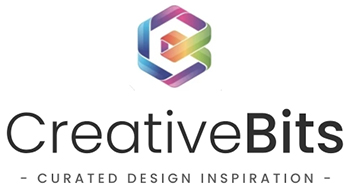Being a fairly active member on several design critique sites, I’ve come across a number of submitted critiques which at first glance, I’m confused because the title will say something like “Logo for my Design Company” and looking at the actual work, it doesn’t appear to be a logo at all. I’m not sure where there were some misunderstandings, but I thought I would make it blunt and obvious for readers of these few steps to know what a logo is and what it is not. It might clear up some people that were under the wrong impression, or it might just be a good brush up for those who already understand the general idea.
First, and probably most important (I see this constantly, and I have requests for this constantly.)
A logo is NOT a Photograph. No, you can’t take a picture of your dog with your digital camera and have that be your Pet-Grooming logo. No, stock clipart is not logo material either. If you’re confused on this concept, take your magnifying-glass tool, and zoom in as much as you can on your project. If there are little square pixels, it’s time to start over.
To continue on that point, Your logo should be in a vector format. What this means is that no matter how big or small you shrink or enlarge your logo, it should never pixelate or blur. Logotypes need to be used in everything from clothing tags to billboard signs – so you’ll need a format that can handle the stretch. I’ve had people make the excuse that they aren’t experienced with the pen tool so they can’t make vector logos – there are a lot more tools besides the pen in Illustrator, so start there and move up.
SIMPLIFY. SIMPLIFY. SIMPLIFY. I can’t stress this enough. We all know the KISS method, (keep it simple, stupid) – but many times designers (and myself) forget to apply it to logo design. Count your elements. If there are more than a few, you probably have too much going on. Remember that consumers will be doing everything from quickly glancing at your logo to staring at it during a red light – make sure that it’s simple enough to remember and decipher. Other things I see are gradients, bevels, and dropshadows. These don’t transition well in enlargement and printing – stay away from these. Again, remember this is not a photograph or an ad – it’s a logo. Drop on needed effects when you incorporate the logo into your designs.
Your logo will NOT tell your story. Your logo is NOT YOUR BRAND. When you create a logo for a company (whether that be for yourself or for another client), remember that your logo is not your brand; it is -representing- your brand. McDonalds for example, does not have a the cheapest, fastest Hamburger in their logo – but everyone knows what the arched “M” means. Just because a company sells a specific product, doesn’t mean you have to illustrate the obvious. Just because your company started small and is growing, moved, etc, doesn’t mean you have to include that in your logo.
There are a few dos and don’ts from me. I don’t know if something like this has already been written, but I was just a little tired of writing out a similar critique response for a good chunk of logos being posted. Commentary is welcome. Also, let me know if there’s anything I forgot, incorrect, or wasn’t clear on. Thanks! 🙂
